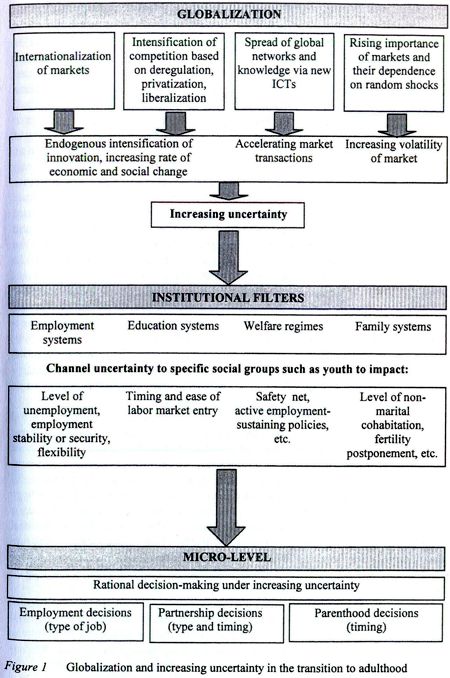Archive for December 7th, 2011
Future Society V no comments
As we pointed out in our previous post, there is an imbalance between the technological overdevelopment and the social underdevelopment in our society. As the number of young unemployed reaches a record level in the UK and as the education taxes increase, the situation is not becoming any clearer and confusion and uncertainty reigns. We are going to explore the main factors of these problems and some solutions to them in the following and next post.
Globalization, Uncertainty and Youth in Society by Hans-Peter Blossfeld, Erik Klijzing, Melinda Mills and Karin Kurz published in 2005 seemed to predict the economical problems facing the world 3 years later. The main factors are:
- internalization of markets
- liberalization within nations
- accelerated diffusion of knowledge and the spread of global networks that are connecting all kinds of markets on the globe via new information and communication technologies
- rising importance of markets and their dependece on random shocks occuring somewhere on the globe ( e.g. major scientific discoveries, technical inventions, new consumer fashions, major politcal or economical upsets)
The authors mention that the markets are becoming more dynamic and more less predictable. The national institutions meant for reducing this uncertainty are employment, education and family systems as it can be seen in the figure below.
In the next post we will look at the 2007 Future Society envisioned by the Science Community of Japan report to find solutions to these global problems and to diminish uncertainties.
Game Theory 101 no comments
Two theives plan to rob a shop, as they approach they are arrested for trespassing (the story differs depending on where you get it from, but focuses on the same point). Based on the assumption the criminals were going to rob the store they put them in different rooms at he station, giving each the same choice:
‘ in exchange for your cooperation, I will dismess your tresspassing charge, and your partner will be charged to the fullest extent of the law – a twelve month jail sentence… if you both confess, your individual testimony is no longer as valuable and your jail sentence will be eight months each.’
Game theory assesses the game with a matrix, see below:
There are two rows and two columns relating to each of the two criminals. Each players ‘payoff’ is a ranking of his most preferred outcome. In this game we are to assume that the players main intention would be to reduce the time spent in jail. The core of Game Theory is the opinion that everybody is ultimately selfish and will always do what is best for them, when confronted with the option to do so. ‘ Game theory does not force players to believe that this is case, as critics frequently claim’. GT simply analyses the options and assembles the most likely strategy for each player based on the potential outcomes.
The most preferred outcome in this case is worth 0, the least is -12 and everything else is representative to the game being played. These values are irrelevant to the outcome of the game however, as they can be replaced with other sets of numbers such as 1-4 representing the most and least preferred outcomes see below:
We are able to see from both tables that the preferred outcome for both players is to confess. There are more complex tree structures and matrix diagrams to go, but for now this is Game Theory 101.
